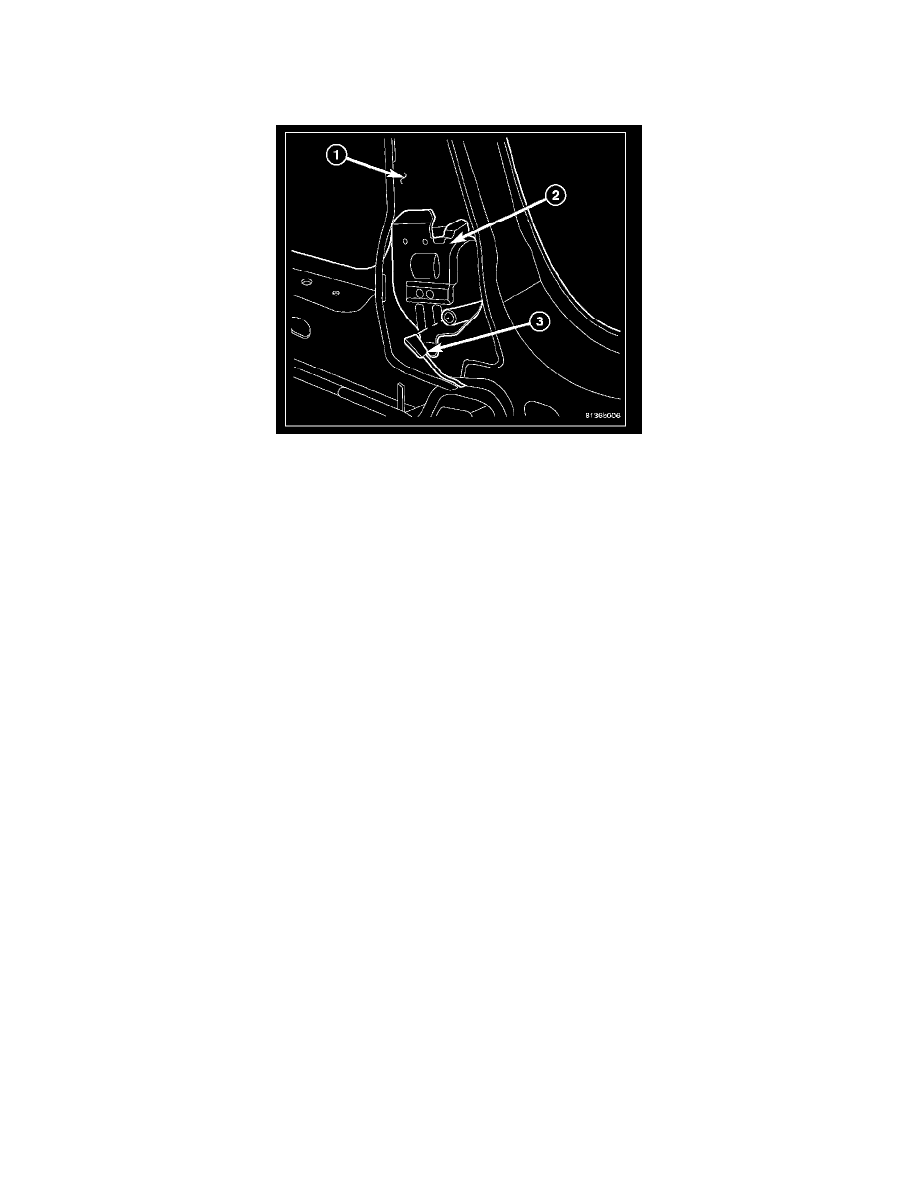Charger SRT-8 V8-6.1L VIN W (2006)

Seat Belt Tensioner: Description and Operation
SEAT BELT TENSIONER
DESCRIPTION
Seat Belt Tensioners supplement the dual front airbags. The seat belt tensioners are integral to the front seat belt retractors (2), which are secured to the
inner B-pillar (1) on the right and left sides of the vehicle. The retractor is concealed beneath the lower B-pillar trim. The seat belt tensioner consists
primarily of a sprocket/pinion, a steel tube, a cast metal housing, numerous steel balls, a stamped metal ball trap, a torsion bar, a small pyrotechnically
activated gas generator, and a short pigtail wire. All of these components are located on one side of the retractor spool on the outside of the retractor
housing except for the torsion bar, which serves as the spindle upon which the retractor spool rides. The seat belt tensioners are controlled by the
Occupant Restraint Controller (ORC) and are connected to the vehicle electrical system through the body wire harness (3).
The seat belt tensioners cannot be repaired and, if faulty or damaged, the entire front seat belt and retractor unit must be replaced. If the front airbags
have been deployed, the seat belt tensioners have also been deployed. The seat belt tensioners are not intended for reuse and must be replaced following
any front airbag deployment. A growling or grinding sound while attempting to operate the seat belt retractor is a sure indication that the seat belt
tensioner has been deployed and requires replacement. Refer to the proper Body Diagnostic Procedures for diagnosis and testing.
OPERATION
The seat belt tensioners are deployed in conjunction with the front airbags by a signal generated by the Occupant Restraint Controller (ORC) through the
driver or passenger seat belt tensioner line 1 and line 2 (or squib) circuits. When the ORC sends the proper electrical signal to the tensioners, the
electrical energy generates enough heat to initiate a small pyrotechnic gas generator. The gas generator is installed in one end of a steel tube that contains
numerous steel balls. As the gas expands, it pushes the steel balls through the tube into a cast metal housing, where a ball guide directs the balls into
engagement with the teeth of a sprocket that is geared to one end of the retractor spool. As the balls drive past the sprocket, the sprocket turns and drives
the seat belt retractor spool causing the slack to be removed from the front seat belts. The ball trap captures the balls as they leave the sprocket and are
expelled from the housing.
Removing excess slack from the front seat belts not only keeps the occupants properly positioned for an airbag deployment following a frontal impact of
the vehicle, but also helps to reduce injuries that the occupant might experience in these situations as a result of harmful contact with the steering wheel,
steering column, instrument panel and/or windshield. Also, the seat belt tensioner torsion bar that the retractor spool rides upon is designed to deform in
order to control the loading being applied to the occupants by the seat belts during a frontal impact, further reducing the potential for occupant injuries.
The ORC monitors the condition of the seat belt tensioners through circuit resistance, and will illuminate the airbag indicator in the instrument cluster
and store a Diagnostic Trouble Code (DTC) for any fault that is detected. For proper diagnosis of the seat belt tensioners, a scan tool is required and the
appropriate body diagnostic information.
